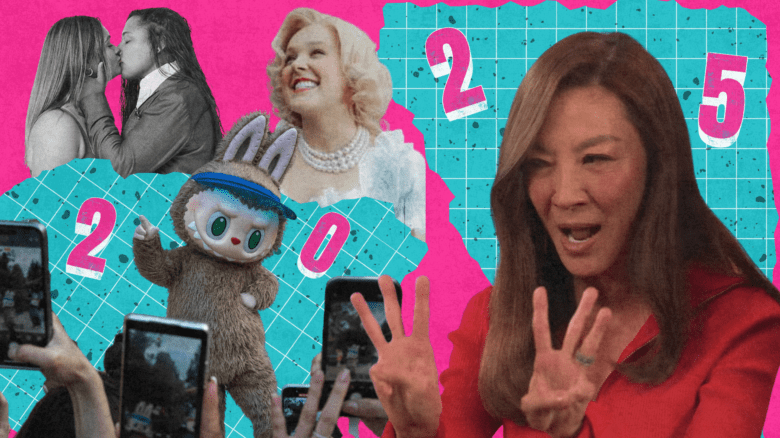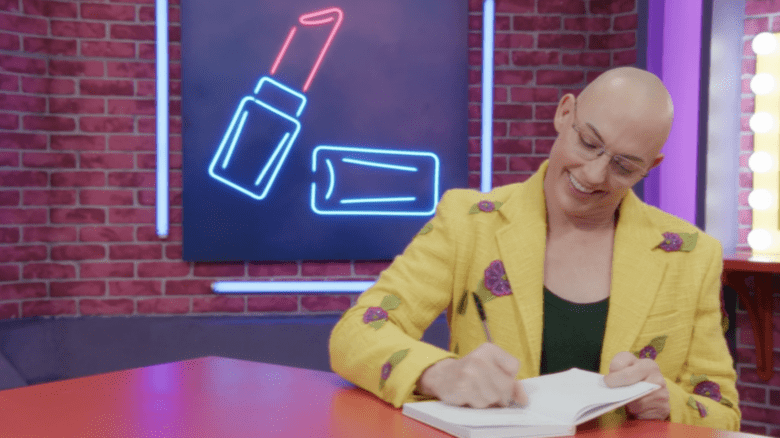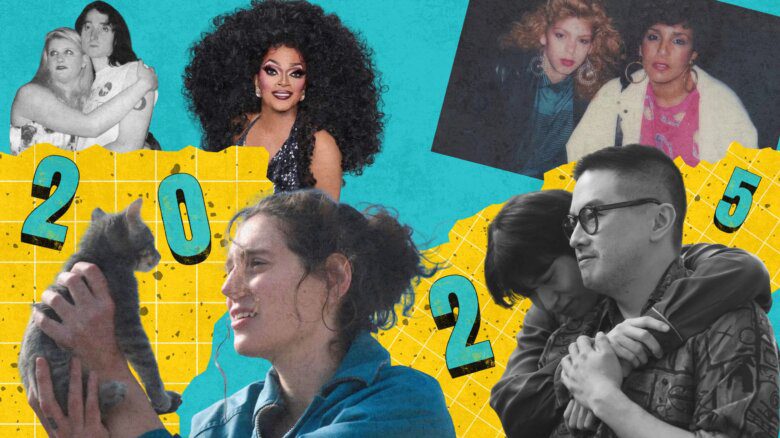When we think of modern-day mainstream artists, it feels natural to also think about the fandom surrounding them. It’s impossible to engage with anything about Taylor Swift without thinking of Swifties—same goes with Ariana Grande and Arianators, Nicki Minaj and the Barbz and countless others. Even smaller artists whose fans don’t have specific monikers still often have dedicated online fan bases. It can feel exciting to discover a lesser-known artist only to stumble across a subreddit or Discord chat filled with others who love them. Online, you have the chance to connect with people you might otherwise have never met, forming communities around shared interests.
Internet fandom feels like a natural and integral part of today’s music landscape. But 20 years ago, at the same time as Canadian pop duo Tegan and Sara were gaining notoriety, online fandom was still in its infancy. In the new documentary Fanatical: The Catfishing of Tegan and Sara, the sisters discuss how important it’s been to build up an online community of fans over the past two decades—and the unfortunate negative consequences that have followed. The documentary discusses a catfisher who specifically targeted Tegan for 16 years—and, in doing so, it comments on the complicated nature of fandom and all the ways it manifests today.
Tegan and Sara are identical twin sisters from Calgary, Alberta. Music has always been a huge part of their identity; they’ve been making music together since being in high school in the mid-’90s, when the only people who knew their songs well enough to sing along were their best friends. They started gaining notoriety in 1998 they won a local battle of the bands contest at the age of 17, and got a gig opening for Neil Young a few years later, which helped them make a name for themselves in the indie and folk scene.
Today, Tegan and Sara are widely recognized as lesbian icons—both twins are queer, a fact that’s celebrated among their fan base. However, as they discuss in Fanatical, their queerness made things harder for them in the beginning; they were two 20-year-old women with short, spiked hair, baggy clothes and facial piercings trying to make it in indie rock, an industry that was dominated by straight men in the 2000s.
They finally started to break out in a real way following the 2004 release of their album So Jealous. “That’s when we felt the shift and it started to feel like fandom,” Tegan says in the film. Suddenly, people were wearing their merch and lining up outside of show venues. It immediately became clear that if there was a main factor uniting their fans beyond a love of music, it was queerness. This was 20 years ago, when it felt rare and exciting for artists to talk openly about their identity. Queer people—and young queer women in particular—gravitated toward Tegan and Sara, forming a community around them. The documentary features interviews with fans from the time who attest to just how meaningful it was to listen to see themselves in lesbian artists—and, eventually, to bond over it with other fans. “Being a fan of Tegan and Sara meant something,” Tegan says in Fanatical. “That was code for like, ‘I’m queer’ or ‘I’m different.’”
Early on, it was clear that their music was drawing together people who often desperately wanted to feel seen and known. That community formed more concretely when internet forums gained prominence around 2008, creating a space where women who were in the closet in real life suddenly had a safe space to be queer and themselves online. A community formed on LiveJournal, and Tegan and Sara’s team also set up an online blog for fans to engage with the artists more directly—they would post updates about their tour or their lives, allowing fans a chance to respond and react together.
Fandom has existed for much longer than the internet has—people were coming together to celebrate artists like Elvis and the Beatles en masse in the ’50s and ’60s. However, the internet gave fandom a different cadence, which Tegan and Sara saw first-hand. A word that comes up often in the documentary is access. Fans now felt that the musicians they loved were accessible to them—a fact that was exciting, but could also easily be abused, especially in a community filled with vulnerable queer women who wanted to belong. Within a year of an online community forming around Tegan and Sara, a catfish appeared on the scene.
Starting in 2008, multiple fans started getting friend requests or emails from Tegan directly. Over time, these fans would form what they were thought were relationships with the real Tegan—the musician they idolized. These relationships, which took place entirely online, were sometimes platonic, and sometimes took more intimate romantic or sexual turns. And while it might sound like these fans were gullible, it’s important to note that the catfish—referred to throughout the documentary as “Fake Tegan”—had information they shouldn’t have. Fake Tegan would share demos from unreleased songs, pictures of Tegan’s apartment and girlfriend at the time, and even the news that her mom was diagnosed with cancer; all information and files that were real, but had never been made public. All of this information made fans feel close to Tegan.
In one case, a fan named Julie had a nearly three-year-long friendship with Fake Tegan that culminated in her sending pictures of the real Tegan’s passport without context. At this point, Julie thought something was off and alerted Tegan and Sara’s management team. The response was gut-wrenching: Tegan had never heard of Julie.
Over the 16 years that followed, Fake Tegan continued this ruse; she got close to fans, sent them private files and information about the real Tegan, and developed relationships with them. When fans found out they’d been played, they were emotionally devastated—and confused: why would someone do this? The situation also took a toll on Tegan, who became wary of everyone in her life as she tried to figure out who was leaking her private documents information. Tegan and Sara’s management team issued warnings to fans through the blog, but the catfishing boldly continued anyway, targeting those who didn’t know about Fake Tegan.
Fan culture is unfortunately widely associated with toxicity today. It’s something we’ve seen just recently with Chappell Roan, who faced backlash after trying to establish boundaries between herself and fans who didn’t respect her personal space. It seems many people believe that dealing with boundary-pushing fans is just something artists have to get used to—no matter how aggressive or prying they might be. In our current cultural context, Fanatical is especially interesting: we get to see how online fandom has developed through the eyes of an artist who has experienced it for as long as online fandoms have existed. As the documentary goes through the stories of several of Fake Tegan’s victims, and the impact of all of this on the real Tegan’s life, it also speaks more widely about both the good and the bad in today’s fan culture—and illustrates how stans can take things too far.
The documentary has an unsatisfying conclusion; Fake Tegan is still around today, and though Fanatical takes us through clues and possible suspects, we never find out who it actually is. The catfisher’s identity remains a mystery, even to Tegan and Sara. In a way, the audience is left feeling the way Tegan has, though on a smaller scale: suspicious of everyone, unsure of who’s telling the truth. As we learn more about the way Fake Tegan impacted her relationship with her fans, her colleagues and even her partners, Fanatical offers a nuanced view on fandom, with a focus on how it preys upon marginalized people desperate for community.


 Why you can trust Xtra
Why you can trust Xtra


